Veryl Oakland’s “Jazz in Available Light” — photos (and stories) of John McLaughlin and Carlos Santana
In this edition, the jazz photographer Veryl Oakland’s photographs and stories feature John McLaughlin and Carlos Santana
...In this edition, the jazz photographer Veryl Oakland’s photographs and stories feature John McLaughlin and Carlos Santana
...Duke Ellington, Dizzy Gillespie, Quincy Jones and Toots Thielemans are featured in this edition of photographs and stories from Veryl Oakland’s book
...In this edition, Veryl Oakland’s photographs and stories feature the singers Sarah Vaughan and Betty Carter
...In this edition, “Keeping Jazz Alive in the Desert,” Mr. Oakland’s photographs and stories focus on Monk Montgomery’s efforts to bring jazz to Las Vegas, and the notable jazz musicians who played in that city
...In this edition, Mr. Oakland’s photographs and stories feature drummers Jo Buddy Rich, Louie Bellson/Tony Williams and Shelly Manne in “A Succession of Battery Mates, Part 2”
...In this edition, Mr. Oakland’s photographs and stories feature drummers Jo Jones, Art Blakey and Elvin Jones.
...Gift offer on Veryl Oakland’s book Jazz in Available Light, one of the most impressive jazz photography books to be published in a long time.
...In this edition of photographs and stories from Mr. Oakland’s book, Thelonious Monk, Paul Bley and Cecil Taylor are featured.
...In this edition of photographs and stories from Mr. Oakland’s book, Dexter Gordon, Art Farmer and Johnny Griffin are featured.
...In this edition of photographs and stories from Mr. Oakland’s impressive book, Frank Morgan, Michel Petrucciani, Charles Lloyd, and Emily Remler are featured…
.... . . …..Jazz in Available Light, Illuminating the Jazz Greats from the 1960s, ’70s, and ’80s is one of the most impressive jazz photo books to be published in a long time. Featuring the brilliant photography of Veryl Oakland — much of which has never been published — it is also loaded with his … Continue reading “Veryl Oakland’s “Jazz in Available Light” — photos (and stories) of violinists Joe Venuti, Stephane Grappelli, Jean-Luc Ponty, Zbigniew Seifert, and Leroy Jenkins”
...In this edition, Mr. Oakland’s photographs and stories feature Mal Waldron, Jackie McLean and Joe Henderson
...Jerry Jazz Musician regularly publishes a series of posts featuring excerpts of the photography and stories/captions found in Jazz in Available Light by Veryl Oakland. In this edition, Mr. Oakland’s photographs and stories feature Art Pepper, Pat Martino and Joe Williams.
...Jerry Jazz Musician regularly publishes a series of posts featuring excerpts of the photography and stories/captions found in Jazz in Available Light by Veryl Oakland. In this edition, Mr. Oakland’s photographs and stories feature Art Pepper, Pat Martino and Joe Williams.
...Jerry Jazz Musician regularly publishes a series of posts featuring excerpts of the photography and stories/captions found in Jazz in Available Light by Veryl Oakland. In this edition, Mr. Oakland’s photographs and stories feature Stan Getz, Sun Ra, and Carla Bley.
...In this edition of Veryl Oakland’s “Jazz in Available Light,” photographs of Red Garland, Dizzy Gillespie and Rahsaan Roland Kirk are featured.
...For over 60 years, the legendary recording engineer Rudy Van Gelder devoted himself to the language of sound. And although he recorded everything from glee clubs to classical music, he was best known for recording jazz – specifically the musicians associated with Blue Note and Prestige records. Joel Lewis writes about his impact on the sound of jazz, and what has become of his Englewood Cliffs, New Jersey studio.
...The author talks about his book, an intensely researched, spirited, and beautifully told story – and an important reminder that Armstrong, Ellington, and Basie all defied and overcame racial boundaries “by opening America’s eyes and souls to the magnificence of their music.”
...In this, the 17th major collection of jazz poetry published on Jerry Jazz Musician, 50 poets from all over the world again demonstrate the ongoing influence the music and its associated culture has on their creative lives.
...A myriad of styles and experiences displayed in eight thoughtful and provocative poems about jazz music…
...Few music industry executives have had as meaningful an impact on jazz music as Michael Cuscuna, who passed away on April 20 at the age of 75. He dedicated his life to music – particularly to the concept of mining and marketing the music recorded a generation ago by essential and under-appreciated jazz musicians buried deep in record label catalogs.
...One-third of the Winter, 2024 collection of jazz poetry is made up of poets who have only come to my attention since the publication of the Summer, 2023 collection. What this says about jazz music and jazz poetry – and this community – is that the connection between the two art forms is inspirational and enduring, and that poets are finding a place for their voice within these virtual pages.
...A year-end compilation of jazz albums oft mentioned by a wide range of critics as being the best of 2023
...In Becoming Ella Fitzgerald: The Jazz Singer Who Transformed American Song, the book’s author Judith Tick writes that Ella “fearlessly explored many different styles of American song through the lens of African American jazz, [and] treated jazz as a process, not confined to this idiom or that genre,” and who “changed the trajectory of American vocal jazz in this century.” Ms. Tick. who is professor emerita of music history at Northeastern University, talks with about Ella – and her book – in this wide-ranging October 23, 2023 interview.
...In a 2013 Jerry Jazz Musician interview, Guthrie Ramsey talks about Bud Powell, one of the greatest pianist’s in jazz history, and the collision of two vibrant political economies: the discourses of art and the practice of Blackness.
...This edition features poetry chosen from hundreds of recent submissions, and from a wide range of voices known – and unknown – to readers of these collections. The work is unified by the poets’ ability to capture the abundance of jazz music, and their experience with consuming it.
...The poets share their love of jazz through personal narratives, and memories of live performances
...This is the 14th extensive collection of jazz poetry published on Jerry Jazz Musician since the fall of 2019, when the concept was initiated. Like all previous volumes, the beauty of this edition is not solely evident in the general excellence of the published works; it also rests in the hearts of the individuals from diverse backgrounds who possess a mutual desire to reveal their life experiences and interactions with the music, its character, and its culture.
...An impeccably researched biography of an influential figure in American music, the goal of which is “to draw attention away from the circumstances surrounding Ayler’s death and bring it sharply back to the legacy he left behind.”
...A collection in which over 30 poets communicate their appreciation for jazz music in poems no longer than seven lines.
...A year-end compilation of jazz albums oft mentioned by a wide range of critics as being the best of 2022
....This collection of jazz poetry – the largest yet assembled on Jerry Jazz Musician – demonstrates how poets who are also listeners of jazz music experience and interact with the spontaneous art that arises from jazz improvisation, which often shows up in the soul and rhythm of their poetic language.
...News concerning a new collection of jazz poetry by Michael L. Newell
...A broad collection of jazz poetry authored by an impressive assemblage of regular contributors and established poets new to this publication – all of whom open their imagination and hearts to the abundant creative experience they derive from this art.
...Over 60 poets from all over the world celebrate their love of jazz…in poetry.
...December has once again produced a large number of year-end “Best Of” lists, and the goal of this post is to present those albums oft mentioned by the critics. While these 21 albums hardly constitute a comprehensive assessment of the “Best Of the ‘Best Of’” lists, it does provide some guidance about 2021 recordings critics seemed to agree about, and suggest we check out more thoroughly.
...The book’s co-author in conversation about the little-known life story of the pioneering Ms. Dodgion, who defied the odds to become a world-class jazz drummer in a world – and on an instrument – dominated by men.
...Molly Larson Cook’s abstract-expressionist paintings accompany the 50 poets contributing to this collection. Her art has much in common with the poetry and music found within it; all three art forms can be described as “landscapes of the imagination,” created by artists from all over the world who are inspired in a meaningful way by jazz music, and whose work can be uniquely interpreted and appreciated (or not!) by those who consume it.
...“It’s not exclusive, but inclusive, which is the whole spirit of jazz.”
-Herbie Hancock
.
And…this spirit is not limited to the musicians, because celebrating jazz is rich in creative opportunity for writers and visual artists as well. The 54 poets who contribute to this poetry collection are living proof of that.
As always, thanks to the poets, and I hope you enjoy…
Joe
...…..The Grenada-born trumpeter Arthur Briggs was among the first to introduce and popularize jazz music, and did so from Europe, where he permanently settled after arriving from Harlem in 1919, and where he eventually grew to be considered “the Louis Armstrong of Paris.” Little-known in America, his musical biography features his befriending and performing with the likes of Sidney Bechet (who Briggs was with when he bought his first soprano saxophone), Josephine Baker, Coleman Hawkins, and Django Reinhardt.
...An interview with The Art of Jazz author Alyn Shipton, whose book is an exploration of how jazz influenced sheet music art, album art, posters, photography, and individual works of fine art.
...Kevin Whitehead, the longtime jazz critic for NPR’s Fresh Air, discusses jazz music and the movies – the “natural allies” that both grew out of existing creative traditions, and, since the mid-1920’s have told stories about “child prodigies, naturals who pick up the music the first time they hear it, hard workers with a painstaking practice regimen, talented players diverted into soul-killing commercial work, and even non-improvisers taught to fake it.”
...Jazz and poetry have always had a symbiotic relationship. Their creative languages share the common soil of imagination and improvisation, from which their audiences discover inspiration and spirit, and perhaps even a renewed faith in life itself.
This collection features 50 gifted poets from places as disparate as Ohio and Nepal, Estonia and Boston, Guyana and Pittsburgh, each publicly sharing their inner world reverence for the culture of jazz music.
.... . “Clifford Brown” is a painting by Warren Goodson, a Saxapahaw, North Carolina artist whose work is driven by his appreciation for Black culture. With his gracious consent, Mr. Goodson’s art is featured throughout this collection. . . _____ . . “Poetry is eternal graffiti written in the heart of everyone.” -Lawrence Ferlinghetti … Continue reading “A Collection of Jazz Poetry — Summer, 2020 Edition”
.... . In 2005, Kevin Boyle’s National Book Award-winning book Arc of Justice: A Saga of Race, Civil Rights, and Murder in the Jazz Age told the story of Ossian Sweet, a Black doctor in Detroit who in 1925 moved from that city’s ghetto into a home of his own in a previously all-white neighborhood. … Continue reading “Interview with Kevin Boyle — author of Arc of Justice: A Saga of Race, Civil Rights, and Murder in the Jazz Age“
...33 poets from all over the globe contribute 47 poems. Expect to read of love, loss, memoir, worship, freedom, heartbreak and hope – all collected here, in the heart of this unsettling spring.
...The winter collection of poetry offers readers a look at the culture of jazz music through the imaginative writings of its 32 contributors. Within these 41 poems, writers express their deep connection to the music – and those who play it – in their own inventive and often philosophical language that communicates much, but especially love, sentiment, struggle, loss, and joy.
...Shepp, believing in the immortality
of Malcolm’s significance, murmurs,
a few weeks after his murder,
“Semper Malcolm” over disjointed jazz,
. . Boston-based writer Con Chapman is the author of two novels, over thirty stage plays, and fifty books of humor. Most recently, he is the author of Rabbit’s Blues, The Life and Music of Johnny Hodges. I had the good fortune of interviewing Mr. Chapman recently about Hodges. That discussion will be published in … Continue reading ““Father Kniest, Jazz Priest”…a short story by Con Chapman”
.... . Carol Friedman’s 1976 photograph of Chet Baker . _____ . …..For many of us who revere jazz music – especially those fortunate enough to have grown up during the era of the 12 x 12 record album jacket and coffee table photography books– the images of great musicians taken by photographers like William … Continue reading “The Jazz Photography Issue”
...Seventeen poets contribute to a collection of jazz poetry reflecting an array of energy, emotion and improvisation
...Seventeen poets contribute 21 poems in this month’s edition…
...On March 11, 2019, .Jerry Jazz Musician.will publish the 50th.winning story in our thrice-yearly Short Fiction Contest. To celebrate this landmark event, we have asked all the previous winners (dating to 2002) to reflect on their own winning story, and how their lives have since unfolded.
This week’s edition covers authors of winning stories #’s 39 – 44
...On March 11, 2019, .Jerry Jazz Musician.will publish the 50th.winning story in our thrice-yearly Short Fiction Contest. To celebrate this landmark event, we have asked all the previous winners (dating to 2002) to reflect on their own winning story, and how their lives have since unfolded.
This week’s edition covers authors of winning stories #’s 35 – 38
...On March 11, 2019, .Jerry Jazz Musician.will publish the 50th.winning story in our thrice-yearly Short Fiction Contest. To celebrate this landmark event, we have asked all the previous winners (dating to 2002) to reflect on their own winning story, and how their lives have since unfolded.
This week’s edition covers authors of winning stories #’s 29 – 34
...Twelve poets contribute 15 poems to this month’s collection
...On March 11, 2019, .Jerry Jazz Musician.will publish the 50th.winning story in our thrice-yearly Short Fiction Contest. To celebrate this landmark event, we have asked all the previous winners (dating to 2002) to reflect on their own winning story, and how their lives have since unfolded.
This week’s edition covers authors of winning stories #’s 17- 23
...…..I have to wonder how many friendships have been forged over mutual love of Miles Davis’ album, Kind of Blue. The one I want to tell you about came to pass in an unlikely setting back during the winter of 1963…
.... . Photo William Gottlieb/Library of Congress Charlie Parker is frequently found on the lists of noted critics and musicians answering the question, “What are 3 or 4 of your favorite jazz record recordings of the 1940’s?” This photograph by William Gottlieb was taken at Carnegie Hall in New York, c. 1947 . __________ … Continue reading “Reminiscing in Tempo: “What are 3 or 4 of your favorite jazz recordings of the 1940’s?””
...In anticipation of Valentine’s Day, I recently invited many of our contributing poets to submit work that combines the themes of jazz music and love, with the result being a collection of voices expressing their own contributions to the language of love…
Dozens of writers submitted over 100 poems, and the best of the submissions — 29 poems by 18 poets — are found on the following 12 pages. Advance through the selections by utilizing the page monitor at the bottom of each page.
Many thanks to everyone who submitted their work.
JJM
...The convergence of poetry and jazz has long been a part of the counterculture, and it has always interested me. An early interview I did for Jerry Jazz Musician was with David Amram, once known as Jack Kerouac’s musical collaborator. In the interview he talked about Kerouac’s love of music, telling me that “he had an enormous memory for music and for jazz and the classics. He could sing the melodies from different Haydn and Beethoven string quartets. He was like an encyclopedia of music and classic literature from Europe. He also had an enormous knowledge of Buddhism. He had a tremendous knowledge of Judaism, as well as the writings from the Old and New Testaments as well as from the Mass. He had this knowledge of so many different things. When he was reading, I would submerge myself into whatever it was he was reading, and I tried to anticipate what would happen next.”
So, the collaboration of words and music is fascinating, and has deep and intellectual roots. It was the basis for my interest in an email I received a while ago from reed player Kevin Flanagan who, like Kerouac, is a Lowell, Massachusetts native. Flanagan’s Riprap Quartet recordings, he informed me, “feature compositions by the band setting the works of Pulitzer Prize winning-poet Gary Snyder” and is
...As a jazz musician for seven decades, and as a chronicler of its intellectual and spiritual development through his fascinating, award-winning photography, Milt Hinton acts as an essential connecting point for the music and its associated culture. Hinton played bass alongside iconic figures like Cab Calloway, Dizzy Gillespie, and Louis Armstrong, and, as a photographer, brought these men and a host of others into focus as musicians, artists, and vital contributors to twentieth-century American life.
With the generous consent of David G. Berger and Holly Maxson, who along with Milt Hinton co-authored Playing the Changes: Milt Hinton’s Life in Stories and Photographs, Jerry Jazz Musician presents a photo exhibit, “Jazz: Through the Life and Lens of Milt Hinton.”
...Bud Powell was not only one of the greatest bebop pianists of all time, he stands as one of the twentieth century’s most dynamic and fiercely adventurous musical minds. His expansive musicianship, riveting performances, and inventive compositions expanded the bebop idiom and pushed jazz musicians of all stripes to higher standards of performance. Yet Powell remains one of American music’s most misunderstood figures, and the story of his exceptional talent is often overshadowed by his history of alcohol abuse, mental instability, and brutalization at the hands of white authorities.
...Giddins has been a frequent contributor to Jerry Jazz Musician. This is the 15th interview in our “Conversations with Gary Giddins” series. He joins us in a June 1, 2010 discussion about his two new books.
...The widespread presence of jazz and blues in African American visual art has long been overlooked. The Hearing Eye makes the case for recognizing the music’s importance, both as formal template and as explicit subject matter. Moving on from the use of iconic musical figures and motifs in Harlem Renaissance art, this groundbreaking collection explores the more allusive — and elusive — references to jazz and blues in a wide range of mostly contemporary visual artists.
...Stanley Crouch — MacArthur “genius” award recipient, co-founder of Jazz at Lincoln Center, National Book Award nominee, and perennial bull in the china shop of black intelligentsia — has been writing about jazz and jazz artists for over thirty years. His reputation for controversy is exceeded only by a universal respect for his intellect and passion. As Gary Giddins notes: “Stanley may be the only jazz writer out there with the kind of rhinoceros hide necessary to provoke and outrage and then withstand the fulminations that come back.”
...In the illustrious and richly documented history of American jazz, no figure has been more controversial than the jazz critic. Jazz critics can be revered or reviled often both but they should not be ignored. And while the tradition of jazz has been covered from seemingly every angle, until now, nobody has ever turned the pen back on itself to chronicle the many writers who have helped define how we listen to and how we understand jazz. In Blowin Hot and Cool: Jazz and its Critics, John Gennari provides a definitive history of jazz criticism from the 1920s to the present.
.... . Kevin Boyle, author of Arc of Justice . ___ . In 1925, Detroit was a smoky swirl of jazz and speakeasies, assembly lines and fistfights. The advent of automobiles had brought workers from around the globe to compete for manufacturing jobs, and tensions often flared with the KKK in ascendance and violence … Continue reading “Interview with Kevin Boyle, author of Arc of Justice: A Saga of Race, Civil Rights, and Murder in the Jazz Age“
...If Benny Goodman was the “King of Swing,” then Fletcher Henderson was the power behind the throne. Not only did Henderson arrange the music that powered Goodman’s meteoric rise, he also helped launch the careers of Louis Armstrong and Coleman Hawkins, among others. In Fletcher Henderson and Big Band Jazz: The Uncrowned King of Swing, Jeffrey Magee offers a fascinating account of this pivotal bandleader, throwing new light on the emergence of modern jazz and the world that created it.
...Roy Eldridge’s style is universally recognized as the all-important link between the playing of Louis Armstrong and the achievements of modernist Dizzy Gillespie. Roy’s daring harmonic approach and his technically awesome improvisations provided guidance and inspiration for countless jazz musicians, but he was also a star performer in his own right, whose recordings as a bandleader, and with Gene Krupa and Artie Shaw, gained him a durable international reputation. The indignities he experienced and overcame during the 1940’s while working in otherwise all-white ensembles proved he was as bold a social pioneer as he was a performer.
...In the final column of his thirty year career as jazz critic of the Village Voice, Gary Giddins wrote, “I’m as besotted with jazz as ever, and expect to write about it till last call, albeit in other formats. Indeed, much in the way being hanged is said to focus the mind, this finale has made me conscious of the columns I never wrote.”
...Village Voice writer Gary Giddins, who was prominently featured in Ken Burns’ documentary Jazz, and who is the country’s preeminent jazz critic, joins us in a conversation recorded on June 20, 2003 — and then slightly revised in October — about the profession of jazz criticism.
The conversation is an autobiographical look at the writer’s ascension in his field, and includes candid observations of other prominent critics. It concludes with a unique “Blindfold Test” that asks Giddins to name the jazz writer responsible for the essay excerpt he is spontaneously shown.
...Lee Tanner began using a camera as a teenager in New York City. An avid jazz fan from the age of eight and inspired by the jazz photography of Gjon Mili, Bill Claxton, Herb Snitzer, and Herman Leonard, he turned to documenting the jazz scene with a love for the music comparable only to his creative drive for visual expression. Photography, however, was only an avocation.
...As jazz critic for the New Yorker magazine since 1957, and author of fifteen books, Whitney Balliett has spent a lifetime listening to and writing about jazz. Generations of readers have learned to listen to the music with his graceful guidance.
In our interview with Balliett, he discusses his latest book, Collected Works: A Journal of Jazz, 1954-2000 (St. Martin’s Press), which collects a bounty of his reviews, reporting and portraits.
...A remembrance (and photographs) of Pat Martino is excerpted from the photographer Veryl Oakland’s book Jazz in Available Light, in which he writes about the 1976 photo session at San Francisco’s Palace of Fine Arts.
...A poetic appreciation for the work of the legendary pianist
...An account that the photographer Veryl Oakland shared of his time spent with Carla Bley and her then-husband Michael Mantler during her visit to the San Francisco Bay area in 1979. This encounter is an example of how she’d find inspiration for her music; in this case within the “the marvelous inner workings of mechanical music boxes.”
...I blame Chet Baker
For opening a window into my past
Sensing that phantom trumpet in my capable hands
The smooth curves of the hard brass, the cold
Mouthpiece against my buzzing lips
Bright melodies blaring
From carefree days of my youth
The poet recalls the impact of Chet Baker’s music on her late, earlier life friend
...The poet shares a memory of the jazz pianist Carla Bley
.... . © Veryl Oakland Bill Evans, Berkeley, California; April, 1969 . . Listening to Bill Evans, June 2020 First the piano by itself— after months of darkness after a Winter of clouds and wind after discontent after lies and lies explaining lies and prayers and ice and rivers forgetting to … Continue reading ““Listening to Bill Evans, June 2020” — a poem by John Stupp”
...Gary Giddins, Jimmy Heath, Fred Hersch, Joe Hagan, Maxine Gordon, Tim Page, Veronica Swift and Marcus Strickland are among the 25 writers, musicians, poets, educators, and photographers who responded to our question, “What are some of your favorite record album covers of all time?”
...Nostalgia
it’s the feeling that brought us here
a bit of joy / sweet glide to a hallowed space
and Fats Navarro is already here
“Community Bookshelf” is a twice-yearly space where writers who have been published on Jerry Jazz Musician can share news about their recently authored books and/or recordings. This edition includes information about books published within the last six months or so (March – September, 2024)
...John Coltrane was the absolute
the decorated, the preternatural
and acknowledged master of what fury
can pour out of the body of a saxophone.
The first time Benny Goodman heard Bix Beiderbecke play cornet, he recalled, he wondered, “My God, what planet, what galaxy, did this guy come from?” (Skretvedt)
...The esteemed writer tells a story about the jazz world before, during, and after the 1959 recording of Kind of Blue, and how the album’s three genius musicians came together, played together, and grew together (and often apart) throughout the experience.
...Sheets of music laid across a checkered table cloth
spread out like streets across the city.
Like the quarter notes on page one, a crescent moon
is seen rising in the ink dark sky.
Woke up this morning to the Bugle Call Rag,
Straight no chasers made my head real bad.
Nothing left for breakfast … goodbye pork pie hat,
Dressed with chilies (ah um) – never hotter than that!
In this excerpt from Designed for Success, the authors write extensively about music instruction and appreciation records dealing with the subject of jazz.
...…From “Fatha” Hines to Brad Mehldau, poets open themselves up to their experiences with and reverence for great jazz pianists…
...Mingus flipped the kitchen switch,
flooding the room with light,
just as, seeking purchase in the slippery sink,
I tumbled through the unlocked window.
. . This space on Sunday is generally reserved for a single poet to read one of their works, but this week’s issue -Father’s Day – features 23 poets who weigh in on the complexity of their relationship with their father, revealing love, warmth, regret, sorrow – and in many cases a strong connection … Continue reading “The Sunday Poem(s): 23 Poets remember their father…”
...“Community Bookshelf” is a twice-yearly space where writers who have been published on Jerry Jazz Musician can share information about their recently authored books.
...Even if you never drank black coffee, that won’t stop you from drinking in the feelings that filter across a room whenever Sarah Vaughan sings Black Coffee. One could drown in that bottomless, inky liquid, that heartache-laden brew,
...It was the first Friday in months that we didn’t both have our own gigs lined up, so my friend Paul invited me out to one of his favorite haunts on 8th Avenue. He promised me the food was good, but told me that the real draw was the live music. Honestly, I tried not to roll my eyes when he dropped that detail on me in the cab. I mean, I love music and all–I’d have to if I was going to work this hard at it–but I kind of was looking forward to giving my ears the night off.
...I’ve never seen much of Spain.
A business trip to Barcelona.
A commuter ride to Girona. Salvador
Dali’s museum. A stop in Sitges
where ivory beach sand abets
a shimmered turquoise sea.
A relaxed, familiar comfort emerges from the poet Terrance Underwood’s language of intellectual acuity, wit, and space – a feeling similar to one gets while listening to Monk, or Jamal, or Miles. I have long wanted to share his gifts as a poet on an expanded platform, and this 33-poem collection – woven among his audio readings, music he considers significant to his story, and brief personal comments – fulfills my desire to do so.
...In this 2021 Jerry Jazz Musician interview, Eubie Blake biographers Ken Bloom and Richard Carlin discuss the legendary composer of American popular song and jazz during the 20th century
.
...The author speaks with Bob Hecht about his book and his decades-long dedication to the genius of Pepper Adams, the stellar baritone saxophonist whose hard-swinging bebop style inspired many of the top-tier modern baritone players.
...In a 2006 Jerry Jazz Musician interview, the eminent Louis Armstrong scholar Thomas Brothers talks about the city of New Orleans, and how it imprinted itself on a young Louis Armstrong…
...“Community Bookshelf” is a twice-yearly space where writers who have been published on Jerry Jazz Musician can share information about their recently authored books.
...The author talks about her book and Chick Webb, once at the center of America’s popular music, and among the most influential musicians in jazz history.
...This busy bee, at the end of a life like clockwork,
a symphony of service to everything but herself—
wings snatched in a world blinded by the way it is—
slowly expiring in the sweet nectar of stillness,
Nine poets, nine poems on the leading figure in the development of bebop…
...Michael Dregni talks about the life of the acknowledged jazz master, Django Reinhardt – and the extraordinary times and circumstances in which he lived.
...An account of two jazz club experiences during a recent trip to Prague
...Bessie Smith biographer Chris Albertson talks about the life of “The Empress of the Blues,” one of popular music’s most important figures during the 1920’s and 1930’s
...The poet honors his friend, the late jazz pianist Janice Scroggins, and reads his poem while Ms. Scroggins accompanies him
...Fletcher Henderson biographer Jeffrey Magee discusses the influential bandleader, and the emergence of modern jazz
...Mr. Mott discusses this posthumous anthology of extraordinary, thought-provoking uncollected essays by Stanley Crouch.
...Ralph Ellison biographer Arnold Rampersad talks about the complex life of the author of Invisible Man, the celebrated work that focuses on racial and economic issues of mid-20th century America
...Louis Armstrong scholar and biographer Thomas Brothers talks about the artist’s most fertile period, from his arrival as a young man in Chicago in 1922 to join Joe “King” Oliver, through the years of the “Hot Five and Hot Seven” recordings
...A young man finds solace in his late fathers’ guitar and finds a new way to live through the blues and a life on the road.
...The author discusses the iconic tenor saxophonist who is one of the greatest jazz improvisers of all time, a lasting link to the golden age of jazz
...In this excerpt, Aidan Levy describes how a 16-year-old Sonny Rollins caught the ear of the 29-year-old Thelonious Monk, a man Rollins looked up to “as a father figure – a guru, really,” whose musical principles “deeply informed his artistic development.”
...Producers Joel Dorn and Hal Willner discuss the album Amarcord Nino Rota, a tribute to Federico Fellini’s musical director
...A discussion about the revolutionary, non-conformist poet Claude McKay’s complex early life that culminated in a pioneering role in American letters
...A review of Stephon Alexander’s book, “The Jazz of Physics: The Secret Link Between Music and the Structure of the Universe”
...A selection of poems from Michael L. Newell’s new collection of poetry, Still the World Beckons: New and Selected Poems (cyberwit.net)
...Mr. Cole’s suite consists of eight poems, all interpretations from songs on pianist Tommy Flanagan’s album Sunset and the Mockingbird Suite
...Sam Cooke’s biographer Peter Guralnick in a wide-ranging conversation about the singer’s epic American life, cut short at the age of 33
...In a November 16, 2020 interview with Jerry Jazz Musician, Ricky Riccardi, author of Heart Full of Rhythm: The Big Band Years of Louis Armstrong, discusses his vital book and Armstrong’s enormous and underappreciated achievements during the era he led his big band.
...A 34-year old childless bachelor reluctantly agrees to babysit the nine-year old daughter of a friend of his on a Saturday night in September. The experience leads to a life-changing revelation.
...In the cold vastness of space without end,
we swirl through time, around the sun,
alone, unknown, unknowable, lonely
collections of stardust, certain we matter,
but vague as to why and how, unable
to prove our value, yet convinced we must
It was probably Dean who was responsible for him being where he was right now, he thought as he sat across the table from his fiancée listening to her talk about the wedding and the gifts they were registered for and the reception. He had discovered an album he didn’t approve of – Barbra Streisand – among Dean’s records when he went to stay with him shortly after he got married to a woman from Cleveland.
...Along with the satisfaction of publishing countless outstanding poems over the years comes my delight in getting to know many of the poets responsible for them. From this experience an active community of writers has taken shape, most of whom share a common vision of communicating their love and appreciation for jazz music and the historic artists they revere. One such poet is Ms. Aurora M. Lewis of Morena Valley, California, whose new book, Jazz Poems: Reflections on a Broken Heart has just been published.
...Hawkins examines the relationship between the characters portrayed in the 2020 film Shirley, and the missed opportunity to include Ralph Ellison in the story
...Information about two newly published books by the poet Michael L. Newell
...Stella sticks her toes in the grass
and she don’t know the impact—
the moonlight bending on the bowing blades of grass
casting long shadows like tracks
I follow her, relaxed.
Few artists inspire creativity like Miles Davis. This collection of poetry by 50 poets from all over the world is evidence of that.
...Richard Carlin and Ken Bloom, authors of “Eubie: Rags, Rhythm, and Race,” talk about Blake and their insightful and timely book – an important portrait of the man and the musical world his work helped reshape.
...This excerpt from the just released Life In E Flat: The Autobiography of Phil Woods(written with Ted Panken) covers Woods’ post-high school life as a budding musician from Springfield, Massachusetts. He recalls early memories of work in local jazz clubs, as well as trips to New York to take lessons with the pianist Lennie Tristano, who introduces him to none other than Charlie Parker.
...In this fifth collection of poetry reflecting these times, 33 poets offer their perspectives…
...He told us we were required to freeze everything in our lives and find the nearest house or store or restaurant or motor lodge. Don’t knock. Go in. Get comfortable. Wait for further instructions.
...Bobbin’ an’ weavin’
schuckin’ an’ jivin’
I’m comin’ up.
I’m comin’ up.
Down the corridor, I walk—
square ring stage
Garden audience awaits.
The community of poets, writers, artists and photographers who have recently contributed their work and time to Jerry Jazz Musician to answer this question, “What one song best represents your experience with 2020?”
...In a November 16, 2020 interview with Jerry Jazz Musician, Riccardi discusses his vital book and Armstrong’s enormous and underappreciated achievements during the era he led his big band.
.... . “Sphinx,” a story by Brian Greene, was a short-listed entry in our recently concluded 55th Short Fiction Contest. It is published with the permission of the author . . . “Lucy XV,” by Vakseen . Sphinx by Brian Greene . 1. …..I met Leonor when I was 23 and she was 51. … Continue reading ““Sphinx” — a short story by Brian Greene”
...Updates and news about content recently and soon-to-be published.
...On the cusp of an election of consequence the likes of which America hasn’t experienced for 150 years, and in the midst of continued Black Lives Matter protests and an indisputable surge of COVID, 29 poets sharing perspectives from all over the world contribute to this volume of poetry reflecting our tumultuous, unsettling era…
...In an exclusive interview, Will Friedwald, author of Straighten Up and Fly Right: The Life and Music of Nat King Cole, discusses Cole and his book.
...An invitation was extended recently to poets to submit work that reflects this time of COVID, Black Lives Matter, and a heated political season. In this third volume, 33 poets contribute…
...I have to admit, Portland has kicked my ass this summer.
Two fires continue to rage here. I’m sure you’ve heard about this city’s Black Lives Matter demonstrations that have also sparked pesky vandalism by dozens of mostly White activists. While their activities seem banal enough – a dumpster fire here, a picnic table on fire there – this behavior shamefully threatens to commandeer BLM’s objectives and gives life to a cynical and evergreen pre-election message stoking White suburban fear. The vandalism tests the patience of even the most tolerant and hopeful of local citizens.
Now mix in the fires of climate change – hot, powerful winds fanning flames on a drought-laden state – and the result is living in, for now, the epicenter of the world’s worst air quality.
...1963 and Mingus and his mighty band
of musicians play and sing “Freedom,”
as marchers for freedom fill streets
throughout the South,
23 poets contribute 26 poems that speak to the era of COVID, Black Lives Matter, and a heated political season
...I recently extended an invitation to poets to submit work that reflects this time of COVID, Black Lives Matter, and a heated political season.
What follows are some of those submitted. More will appear in the future.
-Joe Maita/Editor and Publisher
.... . Given the current Black Lives Matter protests, coupled with the upcoming presidential indoor “rally” in Tulsa (in the middle of a pandemic, no less), it seems like a good time to revisit an interview I conducted with Tim Madigan, author of The Burning: Massacre, Destruction, and the Tulsa Race Riot … Continue reading “Tulsa in 1921 — an interview with Tim Madigan, author of The Burning: Massacre, Destruction, and the Tulsa Race Riot of 1921“
.... . photo by Tengilorg / CC BY . . While Playing A Vinyl Record Music lightens blue mood. It softens mind like feather floating towards earth, then brushes against cheek, chin and ear. Body sways with Jazz in air. A tickle on skin, sensations cradled in ears, harvesting goodness like wheat to enjoy … Continue reading “Poetry by Jerrice Baptiste and Moe Seager”
.... . . …..The poet Michael L. Newell, whose work has often appeared in the pages of Jerry Jazz Musician, has informed me that his new book, Wandering, is now available. Published by cyberwit.net, the book features selections of his poetry from the past fifty years. …..Michael draws readers into his lyrical, vast world with … Continue reading “News about the poet Michael L. Newell”
...The introduction to Philip Clark’s book “Dave Brubeck: A Life in Time” is excerpted here in its entirety.
...The jazz guitarist Yotam Silberstein has created a series of online concerts called the “Quarantine Duos”, featuring gifted musical guest artists
...In the introduction to Maria Golia’s Ornette Coleman: The Territory and the Adventure – excerpted here in its entirety – the author takes the reader through the four phases of the brilliant musician’s career her book focuses on.
...I am writing to share some of the ways I am coping with the current alarming situation, to fill readers in on a few things that are going on with Jerry Jazz Musician, and to invite you to share your own thoughts during this time.
...In a Jerry Jazz Musician interview with The Letters of Cole Porter co-author Dominic McHugh, he explains that “several of the big biographical tropes that we associate with Porter are either modified or contested by the letters,” and that “when you put together these letters, and add our quite extensive commentary between the letters, it creates a different picture of him.” Mr. McHugh discusses his book, and what the letters reveal about the life – in-and-out of music – of Cole Porter.
...Miscellaneous news and notes to share…
...Paul Lopes — associate professor of sociology at Colgate University — talks about how ethnicity, class and hypermasculinity impacted the work of these two visionary, independent artists.
...Mosaic Records co-founder Michael Cuscuna shares news concerning the availability of previously unreleased photographs of Blue Note Records sessions taken by Francis Wolff
.... . Rahsaan Roland Kirk at the Jazz Workshop, San Francisco April, 1967 (photo by permission Veryl Oakland) . . FROM FLYTOWN When I die I want them to play the Black and Crazy Blues, I want to be cremated, put in a bag of pot and I want beautiful people to smoke me … Continue reading “Poems for Rahsaan Roland Kirk — by John L. Stanizzi”
...Interview with jazz record producer, discographer, and entrepreneur Michael Cuscuna.
.... . . _____ . . New Jazz Music Recommendations . . While much of the listening for this month’s edition of “On the Turntable” took place, as always, while walking the sidewalks and paths of Northeast Portland neighborhoods and parks, much of it also took place during … Continue reading ““On the Turntable” — June, 2019 edition”
...This month, a playlist of 19 recently released jazz recordings, including those by Branford Marsalis, Joe Martin, Scott Robinson, Allison Au and Warren Vache
...choirs of insects serenade night
couples bury faces in lovers’ hair
distant train’s cry soars through dark
Maxine Gordon, author of Sophisticated Giant: The Life and Legacy of Dexter Gordon, discusses her late husband’s complex, fascinating life.
...This month, 22 recently released jazz recordings are recommended, including those by Chris Potter, Sons of Kemet, Joey DeFrancesco, Stephan Crump, Julian Lage, Antonio Sanchez and Brittany Anjou
...Mary Schmidt Campbell, author of .An American Odyssey: The Life and Work of Romare Bearden,discusses the remarkable life of this important American artist in a Jerry Jazz Musician interview.
...Recommended listening…20 recently released jazz tunes by, among others, Brad Mehldau, Matt Penman, Ethan Iverson/Mark Turner, Ben Wendel, Julian Lage, and Don Byron
...Apollo Blue, come blow harmonica.
The blues in the meadow, the brass in the horn.
The drum hammers beating where thunder is born.
Gary Giddins, his generation’s most eminent jazz writer and author of the award winning biography Bing Crosby: A Pocketful of Dreams: The Early Years, 1903 – 1940, talks with us about his brilliant second book on Crosby, Swinging on a Star: The War Years, 1940 – 1946. The interview is a fascinating read — a virtual history of Crosby’s life and his impact on America during its most consequential decade. Featuring photos, music and film clips, and information about Giddins’ experience studying Crosby for 25 years.
...Jacko the Jazzman, office hack,
computer screen by day. At nights
he roams the pubs and village halls,
blowing his sax’s rise and fall.
It’s like talking of a lemon light, a blue mist,
a pale moonlight. In this case a pink rain.
It was something to do with Christmas
and I was leaving the supermarket,
buzzed, bugged, by muzak’s soothe and slink.
I walked out, into December,
...Near the end of high school I thought myself sophisticated, a fan of Pink Floyd and King Crimson and Kevin Ayers, but at a Weather Report Concert in 1972 I had a nearly religious conversion. It was as though a stranger had run up to me and said, “hold this for minute” and ran off. Then the music exploded. I had never heard anything like this. Everything changed.
It was as though I grew hair in secret places and a new appendage. I became a different creature. After that night few of my suburban DC white friends’ guitar and lyrics-oriented ears could hear what mine could; the joy and heartbreak in this unfamiliar and ebonic timbre, this canvas painted in horn, acoustic bass, and polyrhythm; this blues, this brokenness, this homesickness.
There it was, though, for anyone who had ears for it—there, in the absence of verse, in the uncertainty and unpredictability of lengthy solos, in the timelessness of power beyond the moment from which
...From red kite country, driving South,
Dai Grandpa, fresh from yesterday,
such yesterday. Only when the
June sun sank, had Dai – dudein’
up my shirt front, puttin’ on
the shirt studs – reached evening’s land
– and such a yester-e’en. (Dai caught
the breeze, his ship came home.)
He breakfasts now in wild kite
2017 is the 100th birthday year of several jazz immortals – among them Thelonious Monk, Dizzy Gillespie, Buddy Rich, and, today, Ella Fitzgerald.
As a young and naïve jazz fan in the 1960’s, like Louis Armstrong, Ella seemed “square” to me – her voice too sweet and happy for my ears, especially when compared to the singer who most moved my soul to discover more of the music, Billie Holiday. Plus, the Songbook series she became internationally famous for seemed too smartly packaged, slick in a Madison-Avenue-way that tore me away from the bins that stocked her record albums.
Over the years, however, I eventually came to appreciate and cherish her, especially as I learned the courageous and inspirational nature of her biography, and played her recordings with Chick Webb, and dug the collaborations with the Ink Spots, Louis Jordan, and eventually, of course,
...Paul Morris is a graphic designer and writer who collects album art of the 1940’s and 1950’s. He finds his examples of influential mid-century design in the used record stores of Portland, Oregon.
In this edition, Paul features choice selections from Decca Records
...Why is my race your foe needling you to lord over me, saving me from my own savagery?
Why is my skin color a phobia gnawing at your innards,
making door locks snap as I approach?
Why is my punishment swift revealing deep seated prejudices, exposing unrecognized biases?
Why is my street flashing “blue”
when verdicts and fines from the 2008 meltdown are reversed?
Why is my excessive “heat” normal
...“Liner Notes for ‘Stardust’ — In Seven Choruses” is a cycle of short poems framed as imaginary liner notes and prompted by poet Doug Fowler’s favorite musical covers of Hoagy Carmichael’s “Stardust.” In essence, according to Fowler, they are “imaginary liner notes for a real song about an imaginary song about love.”
The cycle is also partially a tribute to Chu Berry, who died as the result of a car accident in Conneaut, Ohio, in 1941, not far from where Fowler lives.
...Three cars honked almost in union. Then successively, each a blare in order, one two three, then two three one three four with the line through, beat ripitum boom, ba, riptum boom, now hear it a little faster, just a little faster, lips to instrument, trumpet, three valves, infinite notes to jot to sing to blow, perched lips, fat cheeks, cosmic energy of the union, the intertwined with keys of ivory.
Marcus Breck was recalling stepping on stage the first time. Nervousness rising from toes to a tingling head. Dry mouth, the initial silence of the room that precedes the beginning of
...New Short Fiction Award
Three times a year, we award a writer who submits, in our opinion, the best original, previously unpublished work.
Don Dewey of Jamaica, New York is the winner of the 38th Jerry Jazz Musician New Short Fiction Award, announced and published for the first time on March 5, 2015.
Till’s Piano Lesson
by
Don Dewey
_______________________________
“You’re early, Till. I told you never come early.”
“Sorry. I guess my watch is off.”
“Buy a new one.”
Klein refit the crutches under his armpits and swung his crabbed legs back toward the studio, leaving Till to enter the living room for himself. Till didn’t like living rooms. He thought them banal in their predictable assembly of tables, chairs, lamps, and rugs. What he wanted to see someday was a living room with people who dropped dead as soon as they put a foot outside it. Living rooms should have been what they claimed to be.
Klein’s pupil in the studio seemed to be trying to erase his presence through sheer aggression. Had Mozart started that way? Till didn’t think so.
...Club Havana was known for hosting decent Afro-Cuban jazz bands. There was dancing Thursdays through Sundays, and Sunday afternoons, the management handed out free cigars. Hector became close to the house band, whose rhythm section inspired him. He thought the drummer Manny was off the charts. Completely bald, he wore leather bands that cinched his pump wrists as if to keep his hands from flying off his body whenever he played fast and furious. A skinny, short guy played bongos, and a drunk worked the tumbadoras. Jorge, Carlos and Javier, all dapper guys, played horns. As if to distinguish themselves, one wore a mustache; another, a hat; and the other, wire rimmed glasses. Additionally, there was a young Julliard graduate on piano, a white-haired Cubano on flute, and a sax player who looked exactly like Lester Young. One afternoon, before their gig, Manny and Hector got to talking, and Hector started messing around on the tumbadoras, imitating what he had so often seen and heard. Manny raised his eyebrows and cocked his head. He liked this kid, and his sound was good.
“Why don’t you come hang with us this weekend. A few of us like to jam at Columbus Circle. Come along and let’s see how you work those congas in a group.”
Over the course of the summer, Hector hung out in the park. It was there he met
...Julian “Cannonball” Adderley’s stellar career began in the era of hard bop and ended (far too soon) during the time of jazz fusion. In between, he played on some of the most prominent recordings in the history of jazz — Miles Davis’ Kind of Blue and his own Somethin’ Else among them — and ultimately became what the critic Gary Giddins described as “the patron saint of the soul-hymn movement,” a music that would reach a broad affluent audience while also keeping jazz relevant in the African-American neighborhoods.
...In Louis Armstrong: Master of Modernism, Thomas Brothers picks up where he left off with the acclaimed Louis Armstrong’s New Orleans, following the story of the great jazz musician into his most creatively fertile years in the 1920s and early 1930s, when Armstrong created not one but two modern musical styles. Brothers wields his own tremendous skill in making the connections between history and music accessible to everyone as Armstrong shucks and jives across the page. Through Brothers’s expert ears and eyes we meet an Armstrong whose quickness and sureness, so evident in his performances, served him well in his encounters with racism while his music soared across the airwaves into homes all over America.
Brothers discusses his book with Jerry Jazz Musician publisher Joe Maita in an April, 2014 interview.
...
The publication of Arya Jenkins’ “Epistrophy” is the third in a series of short stories she has been commissioned to write for Jerry Jazz Musician. For information about her column, please see our September 12 “Letter From the Publisher.” For Ms. Jenkins’ introduction to her work, read “Coming to Jazz.”
__________
Disenchanted leaves fell early through the trees the summer I left my life for an ashram. The path to the ashram snaked into the woods not far from Tanglewood and reminded me less of where I had been than where I was going with its rotund emphasis on kindness and formality-Within a year I would be studying Buddhism in a monastery and teaching English at Cornell in Ithaca.
I was attempting to put a punto finale to the moneyed nonsense in which I’d lived too long in Fairfield County, and wanted to quell my fulminating instinct, my destructive fires and find some kind of peace and stability, even at the expense of boredom–which may have been expecting too much.
...It’s light on silver-black and white,
Grainy footage of a smoky room,
A woman at the keys. A spotlight
As perfectly round as the moon
Frames her form. She picks at a tune.
This is jazz, now, it’s uncertain.
Her fingers stop, hover, resume.
She stands, walks behind a curtain.
Years later — in color now –her
Faith allows her to break that long
Silence, permits her to
My friend Carl lived in a house full of ghosts with an evil sonofabitch brother who stole his shit, I mean all of it. But Carl himself, man, Carl was good as gold. He would give you the shirt off his back–everything, and did.
I moved in with my ex-old lady across the street from him in the late 80s when I was drying out and desperate for change. Marcy took me in, even after I had been such a dick. She knew it was the booze made me sleep around, and even though she kicked my drunken ass out on the curb, she took me in once she saw I was sober and clean. By then, she was already shacked up with a polite, fat, slob who was everything I wasn’t or would ever be.
Homestead Avenue, where we lived, was a pleasant street in a nice section of Fairfield called Black Rock, near the water. At the time, people were starting to navigate to the hood, although since then real estate prices have dropped due to the many storms–there have been too many storms in the area, man. But because of Black Rock’s proximity to the sound, which is like the sea, artists and strange people gravitate there.
I noticed Carl right off the bat. You couldn’t help but see him sitting on his porch with his supersized feet, head and limbs, a Franken monster. So I crossed the street one day to meet my neighbor, who looked a sorry sight–blackish long hair
...In a little town in Illinois, in a bar near the Wisconsin border, one man blew honey-dripping sounds from his saxophone. A woman’s body swayed in time with the sweetness emitting from that horn. She kept time with the beat and moved like melodic notes going up and down the scale. I imagined blowing musical sounds into her ear.
I crossed the wooden dance floor where she whirled, grabbed her hand and began to spin. Like musical notes, one black, one white, we danced all night. I softly sang into her ear, “Imagine how we’d dance in bed.”
She laughed in a low contralto voice, and changed it to a soprano when the high notes flowed.
...Paul Morris is a graphic designer and writer who collects album art of the 1940’s and 1950’s. He finds his examples of influential mid-century design in the used record stores of Portland, Oregon.
In this edition, Paul focuses on the art of Columbia
...Album covers: to those who grew up in the vinyl era, the images printed on the sleeves of LPs were closely linked in our imaginations with the music they represented. The iconic covers of the ’60s – Sgt. Pepper, The Band at Big Pink, Cheap Thrills drawn by R. Crumb – put an enduring visual stamp on the pop culture of the time.
This art form has a relatively short history – only in the ’40s were 78 rpm album covers routinely decorated with art.
Intense, powerful, and compelling, Matterhorn is an epic war novel in the tradition of Norman Mailer’s The Naked and the Dead and James Jones’s The Thin Red Line. It is the timeless story of a young Marine lieutenant, Waino Mellas, and his comrades in Bravo Company, who are dropped into the mountain jungle of Vietnam as boys and forced to fight their way into manhood. Standing in their way are not merely the North Vietnamese but also monsoon rain and mud, leeches and tigers, disease and malnutrition. Almost as daunting, it turns out, are the obstacles they discover between each other: racial tension, competing ambitions, and duplicitous superior officers. But when the company finds itself surrounded and outnumbered by a massive enemy regiment, the Marines are thrust into the raw and all-consuming terror of combat. The experience will change them forever.
...Take Five: The Public and Private Lives of Paul Desmond is the story of a jazz artist who transcended genres to establish one of the most immediately recognizable sounds in all of music. Long before his success as the alto saxophonist with the Dave Brubeck Quartet, decades before he wrote “Take Five ,” Desmond determined that he would be himself, never a disciple or an imitator, whatever the cost.
...When my doctor released me from the asylum in Saint-Remy, he warned me to stay away from absinthe or my hallucinations would worsen. I didn’t tell him I had no need for absinthe to hallucinate. I often had company, even when there wasn’t anyone with me.
I’d spent some of my time in the asylum playing billiards. Everyone assured me that I was a natural, the best player they’d ever seen. Maybe, instead of painting, I’d play billiards for a living. As soon as I walked past the gates of the asylum,
...ARCHIVAL FOOTAGE: THE APOTHEOSIS OF MARY LOU WILLIAMS
It’s light on silver-black and white,
Grainy footage of a smoky room,
A woman at the keys. A spotlight
As perfectly round as the moon
...Leadbelly, Robert Johnson, Charley Patton — we are all familiar with the story of the Delta blues. Fierce, raw voices; tormented drifters; deals with the devil at the crossroads at midnight.
In an extraordinary reconstruction of the origins of the Delta blues, historian Marybeth Hamilton demonstrates that the story as we know it is largely a myth. The idea of something called Delta blues only emerged in the mid-twentieth century, the culmination of a longstanding white fascination with the exotic mysteries of black music.
...I can’t fight. I’m not made for it. When I’m backed into a corner I can run, and that’s what I’m good at. I can’t gather myself to put up an opposition. I begin to quake and crumble and the parts of myself split into ever-smaller parts that want to get away as fast as possible. I’m an explosion, a spectacle to momentarily confuse the enemy. Also a physical wreck. The only movement that suits me is flight. My parts will converge into a fluid line of energy, but only in movement. It’s the way I’m made. If I held my hand out, lengthened my fingers for you and attempted to keep as still as possible, you would marvel at the trembling. But then give me a guitar and this same hand will produce a line no less marvelous in fluid grace.
...It had been warm all day, the type of day where the heavy air presses into you and makes it hard to move. It didn’t help that her shift had been spent calling customers and listening to endless streams of why they couldn’t make their hydro payments. And they would yell, swear at her as if she had caused their loss of job, their alcoholism, their way of life. She absorbed it all, the words sinking through the membrane in her ear and resonating within the membrane of her mind long after the calls had stopped.
If there’d been a breeze, or a slight coolness to the air, then those words could have lifted from her. They heated her, churning and boiling within so that by the time she got the apartment door open her flesh looked glossy with the sweat.
...Ralph Ellison is justly celebrated for his epochal novel Invisible Man, which won the National Book Award in 1953 and has become a classic of American literature. But Ellisons strange inability to finish a second novel, despite his dogged efforts and soaring prestige, made him a supremely enigmatic figure. In Ralph Ellison: A Biography, Arnold Rampersad skillfully tells the story of a writer whose thunderous novel and astute, courageous essays on race, literature, and culture assure him of a permanent place in our literary heritage.
...The 1951 regular season was as good as over. The Brooklyn Dodgers led the New York Giants by three runs with just three outs to go in their third and final playoff game. And not once in major league baseballs 278 preceding playoff and World Series games had a team overcome a three-run deficit in the ninth inning. But New York rallied, and at 3:58 p.m. on October 3, 1951, Bobby Thomson hit a home run off Ralph Branca. The Giants won the pennant.
...January 30, 1946 — Allied Headquarters, Paris, France
“What is it, Captain? I’m very busy.”
“Sorry to disturb you, Colonel, but you said you wanted a report as soon as I completed my investigation.”
Colonel Washburn searched his desk muttering, “Yes, yes. I’ll read your report as soon as you’ve filed it.”
...New Orleans at the turn of the twentieth century was a complicated city, a rough and beautiful place bursting with energy and excitement. It was a city marked by racial tensions, where the volatile interactions between blacks and whites were further confounded by a substantial Creole population. Yet it was also a city of fervent religious beliefs, where salvation manifested itself in a number of ways. Perhaps abolve all else, New Orleans was a city of music: funeral bands marched through the streets; professional musicians played the popular tunes of the day in dance halls and cabarets; sanctified parishioners raised church roofs with their impassioned voices; and early blues musicians moaned their troubles on street corners and in honky-tonks, late into the night.
...On New Year’s Eve 1972, following eighteen magnificent seasons in the major leagues, Roberto Clemente died a hero’s death, killed in a plane crash as he attempted to deliver food and medical supplies to Nicaragua after a devastating earthquake. Author David Maraniss now brings the great baseball player brilliantly back to life in
. . Peter Guralnick, author of Dream Boogie: The Triumph of Sam Cooke . He was the biggest star in gospel music before he ever crossed over into pop. His first single under his own name, “You Send Me,” was an historic success, going to number one on the charts and selling two … Continue reading “Peter Guralnick, author of Dream Boogie: The Triumph of Sam Cooke“
...“I suppose you could say that the seeds of my next book, a full-length biography of Louis Armstrong, were planted three years ago, when I was writing an essay for the New York Times about Armstrongs centenary in which I called him “jazz’s most eminent Victorian,” Terry Teachout wrote in his August 17, 2004 Arts Journal blog.
Three years after the Times piece was published, he took a tour of the Louis Armstrong House in Queens and came away with the enthusiasm required of such an endeavor.
...There are few American lives more powerful or more moving than that of C. L. Franklin. Born in rural Mississippi, he would go on to become the most famous African American preacher in America. His style of preaching revolutionized the art, and his call for his fellow African Americans to proclaim both their faith and their rights helped usher in the civil rights movement. Booming, soaring, flashy, and intense, C.L. was one of a kind. And yet Franklin was, like many great public figures, immensely complicated. A beacon of faith and light, he also knew the shadows. He knew the power of the Lord, yet he was no saint. In Singing in a Strange Land, Bancroft Prize-winning historian Nick Salvatore tells Franklin’s story for the first time.
...Django Reinhardt was arguably the greatest guitarist who ever lived, an important influence on Les Paul, Charlie Christian, B.B. King, Jerry Garcia, Chet Atkins, and many others. Handsome, charismatic, childlike, and unpredictable, Reinhardt was a character out of a picaresque novel. Born in a gypsy caravan at a crossroads in Belgium, he was almost killed in a freak fire that burned half of his body and left his left hand twisted into a claw. But with this maimed left hand flying over the frets and his right hand plucking at dizzying speed, Django became Europe’s most famous jazz musician, commanding exorbitant fees — and spending the money as fast as he made it.
...Although it has had its share of detractors, critical acclaim for Stanley Crouch’s first novel, Don’t the Moon Look Lonesome, is quite impressive — particularly among scholars and fellow writers. For example, Susan di Sesa, former Executive Editor of The Modern Library called it “one of the most profound novels in the English language,” while Pulitzer Prize-winning author James Alan McPherson wrote, “In attempting to employ ‘riffs’ to explore the emotional and psychological dimensions of his characters, Stanley Crouch has evolved a new narrative technique.”
Crouch — known primarily as an outspoken New York cultural critic — clearly understands that a serious writer’s role is to provoke his audience with potentially new avenues of thought
...“Moon River,” “Laura,” “Skylark,” “That Old Black Magic,” “One For My Baby,” “Accentuate the Positive,” “Satin Doll,” “Days of Wine and Roses,” “Something’s Gotta Give,” — the honor roll of Johnny Mercer’s songs is endless. Both Oscar Hammerstein II and Alan Jay Lerner called him the greatest lyricist in the English language, and he was perhaps the best-loved and certainly the best-known songwriter of his generation. But Mercer was also a complicated and private man.
...Illicit drugs have transfigured the American cultural landscape in the past half-century, leaving their mark on everything from art, music, literature, sexuality, spirituality, pop culture, the economy, and politics, to crime, public health, and national law enforcement policy. In Can’t Find My Way Home: America in the Great Stoned Age, 1945 – 2000, documentary filmmaker and writer Martin Torgoff traces the tangled trajectory of illegal drug use in America, as it spread post-World War II from the Beats and bebop musicians, all the way to the Ecstasy-fueled rave culture.
...Today, Celina is going tolive up to the promise she made to him fifteen years ago, that November dayin the neurologist’s parking lot, when he told her, “When my voice goes,I go.”
Ray can still hear the pitter-patter of raindrops onthe umbrella they’d shared that day, drumming out the minutes that passedas they stood, emotionally and physically immobile, terrified at the thoughtof taking another step. And he can still recall the wet wool smell of hersweater when he tucked his face into the hollow of her neck to hide his tears.But he thought Celina had chosen to forget that day and her vow, until twomonths ago when she asked him if he’d changed his mind. “Squeeze my arm ifyou still want to,” she’d told him.
...Lost Sounds is the first in-depth history of the involvement of African Americans in the earliest years of recording. It examines the first three decades of sound recording in the United States, charting the surprising role black artists played in the period leading up to the Jazz Age.
Applying more than thirty years of scholarship, Tim Brooks identifies key black artists who recorded commercially in a wide range of genres and provides revealing biographies of some forty of these audio pioneers. Brooks assesses the careers and recordings of George W. Johnson, Bert Williams, George Walker, Noble Sissle, Eubie Blake, the Fisk Jubilee Singers, W.C. Handy, James Reese Europe, Wilbur Sweatman, boxing champion Jack Johnson, as well as a host of lesser-known voices.
...Often overshadowed by San Francisco, its twinkling sister city across the Bay, Oakland is itself an American wonder. The city is surrounded by and filled with natural beauty — mountains and hills and lakes and a bay — and architecture that mirrors its history as a Spanish mission, Gold Rush outpost, and home of the West’s most devious robber barons.
Oakland is also a city of artists and blue-collar workers, the birthplace of the Black Panthers, neighbor to Berkeley, and home to a vibrant and volatile stew of immigrants and refugees.
...Considered by many to be the greatest blues singer of all time, Bessie Smith was also a successful vaudeville entertainer who became the highest paid African-American performer of the roaring twenties.
First published in 1971, author Chris Albertson ‘s Bessie was described at the time by critic Leonard Feather as the most devastating, provocative, and enlightening work of its kind ever contributed to the annals of jazz literature. New Yorker critic Whitney Balliett called it the first estimable full-length biography not only of Bessie Smith, but of any black musician.
...From the Jim Crow world of 1920s Greenville, South Carolina, to Greenwich Village’s Café Society in the ’40s, to their 1974 Grammy-winning collaboration on “Loves Me Like a Rock,” the Dixie Hummingbirds have been one of gospel’s most durable and inspiring groups.
...A successful recording generally entertains and communicates passion on an earthly, mortal level. We typically respond to an effective performance by humming the melody, tapping our feet, and sharing it with friends. It might even “stomp the blues,” as the critic Albert Murray suggests.
Few recordings, however, actually challenge a listener to address one’s personal essence.
...In the spring of 1959, seven musicians got together in a converted church on 30th Street in Manhattan and made jazz history. Over forty years have passed since Miles Davis assembled his famed sextet to record Kind of Blue, and in that time the album has risen to the level of masterpiece.
In Kind of Blue: The Making of the Miles Davis Masterpiece, Ashley Kahn gives readers the unprecedented opportunity to enter the 30th Street studio and witness the creation of this remarkable album
...Nelson Riddle will forever be linked with the music and recordings of such unforgettable vocalists as Frank Sinatra, Ella Fitzgerald, Judy Garland, Rosemary Clooney, Linda Ronstadt, and dozens of others. Riddle not only helped to establish Nat “King” Cole’s career in the 1950s, but was also a major participant in reviving Sinatra’s career. He served as arranger of many classic Sinatra albums, including Only the Lonely and In the Wee Small Hours.
September in the Rain is the first biography of the most highly-respected arranger in the history of American popular music.
...ester Young was jazz music’s first hipster. He performed onstage in sunglasses and coined and popularized the enigmatic slang “that’s cool” and “you dig?” He was a snazzy dresser who always wore a suit and his trademark porkpie hat. He influenced everyone from B. B. King to Stan Getz to Allen Ginsberg. When he died, he was the subject of musical tributes by Charles Mingus (“Goodbye Pork Pie Hat”) and Wayne Shorter (“Lester Left Town”), and incidents from his life were featured in the movie ‘Round Midnight.
...When Gary Giddins, the jazz critic and columnist for the Village Voice, began work on an in-depth biography of Bing Crosby, many asked him, “Why?” He has explained that Crosby, perhaps the most famous entertainer in America between 1927 and 1956, has been unjustly forgotten since his death in 1977.
...Author John Fraim is a very interesting man. Taking on a subject like John Coltrane is not a left-brain experience. He knew wisdom and historical perspective were required before writing about a complex, musical prophet, and wrote this biography the way Coltrane lived his life In his award-winning book, Spirit Catcher, The Life and Art of John Coltrane, he presents Coltrane’s life as spiritual quest, and in it creates a piece of art not often found in biographical form.
...T.S. Monk has done what few children of cultural genius’ have done before him….forge a successful, highly respected career of his own. His current release, the enhanced CD “Monk on Monk”, is not only one of the best Monk tribute albums ever recorded, critics have mentioned it as among the best jazz releases of 1997.
...

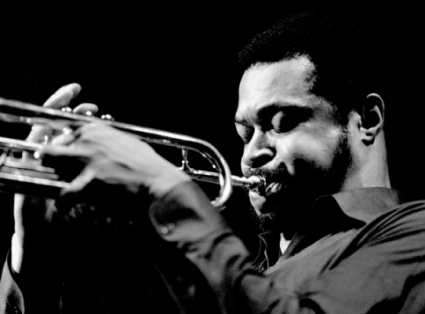
”Every Time” by Michel Krug
The Sunday Poem is published weekly, and strives to include the poet reading their work.... Michel Krug reads his poem at its conclusion
Click here to read previous editions of The Sunday Poem



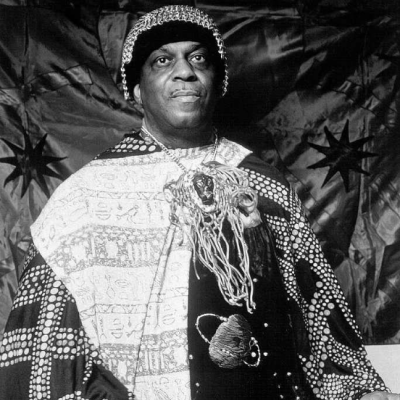
Click here to read more short fiction published on Jerry Jazz Musician
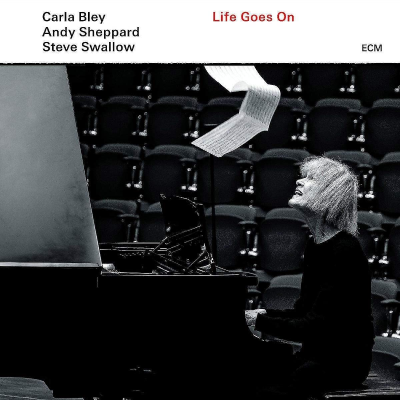

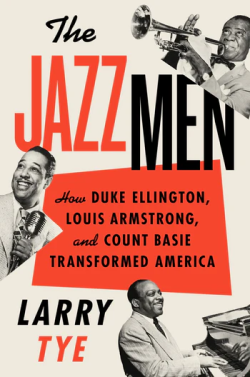
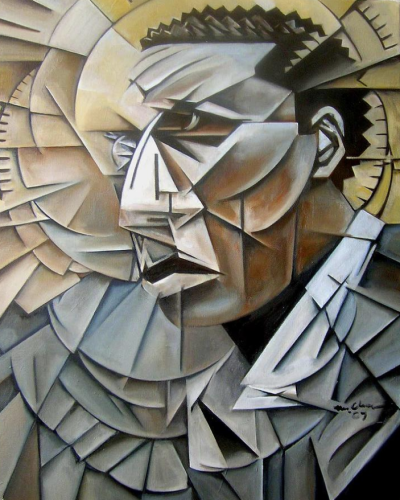
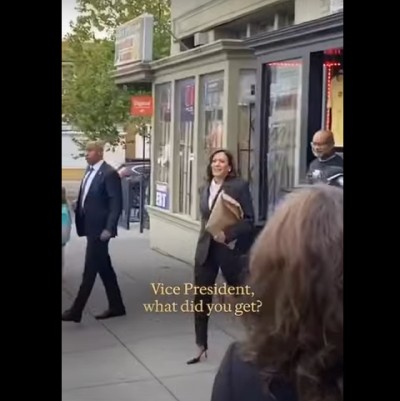

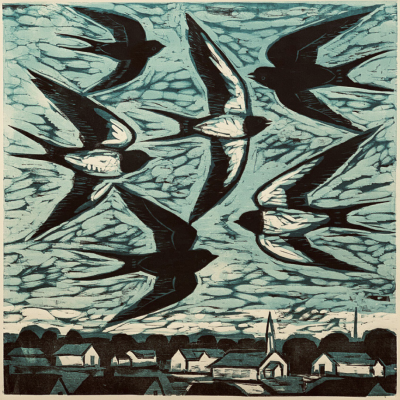
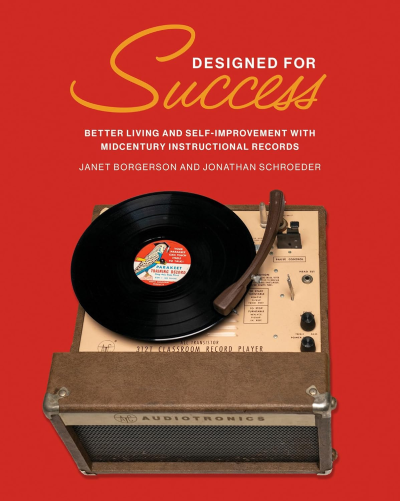
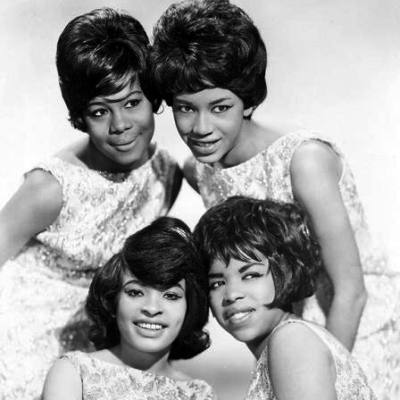

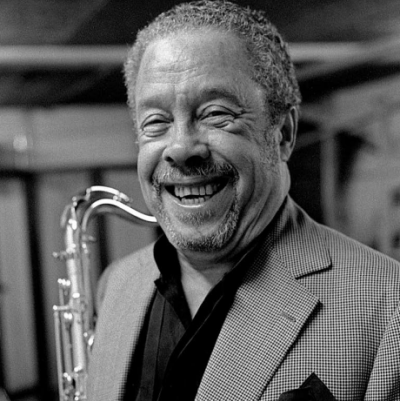
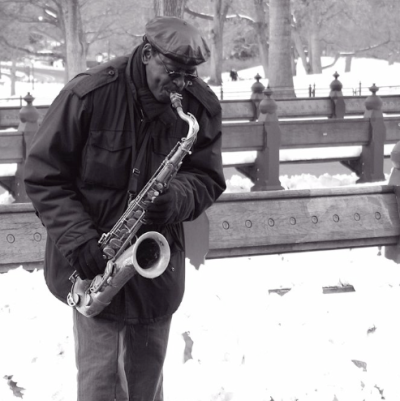
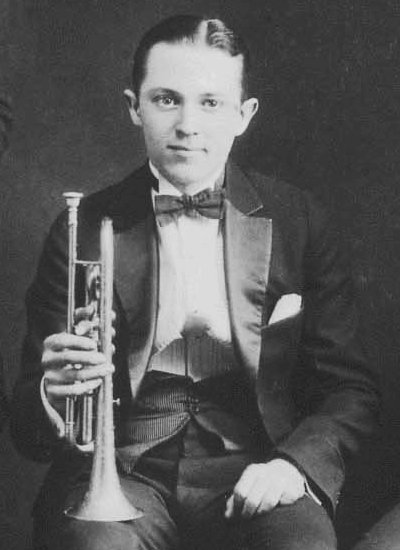
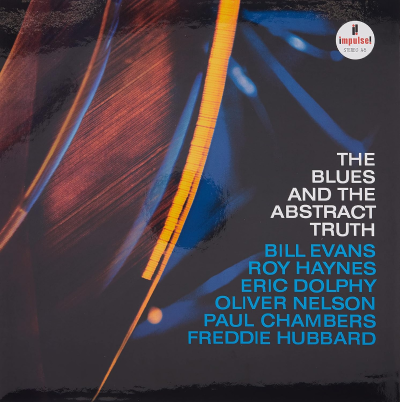
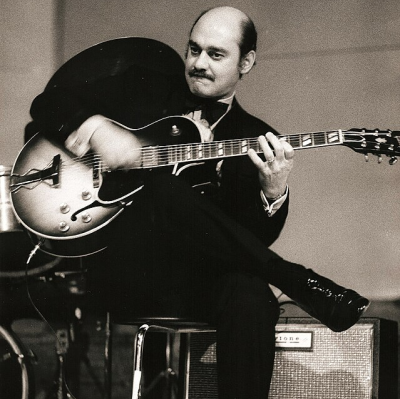
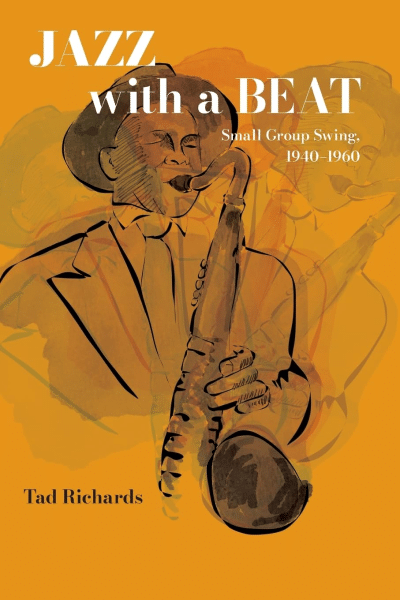
Click here to read more book excerpts published on Jerry Jazz Musician
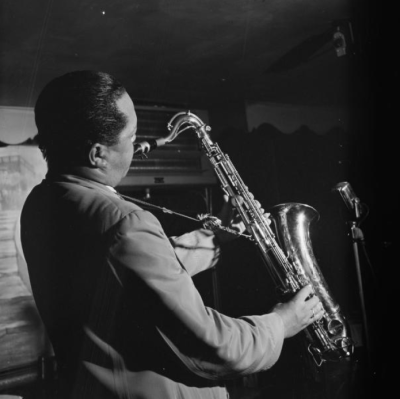
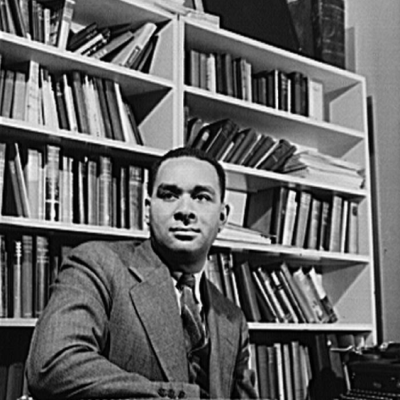




Dear Readers:
Reader funding helps support the expense of publishing this website, and to keep it free of advertising – which is a rarity in the dot-com world. Many thanks to those who have recently contributed, and to those who have done so multiple times. Your support is very much appreciated.
If you are able, please consider making a contribution? Information regarding how to do so is found by clicking here.
For viewing my long range vision for Jerry Jazz Musician, please click here.
Thank you!
Joe Maita
Editor/Publisher
,

